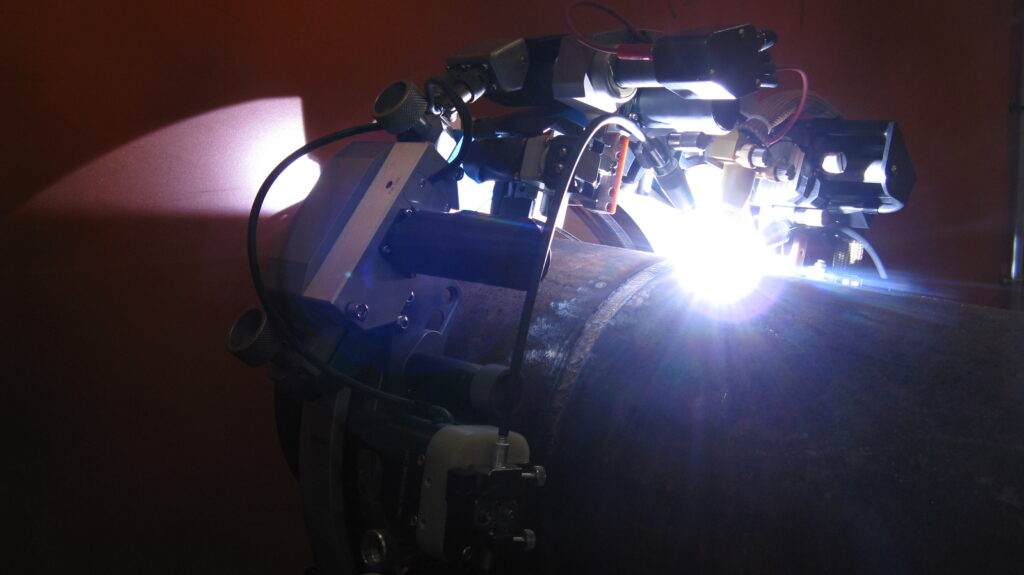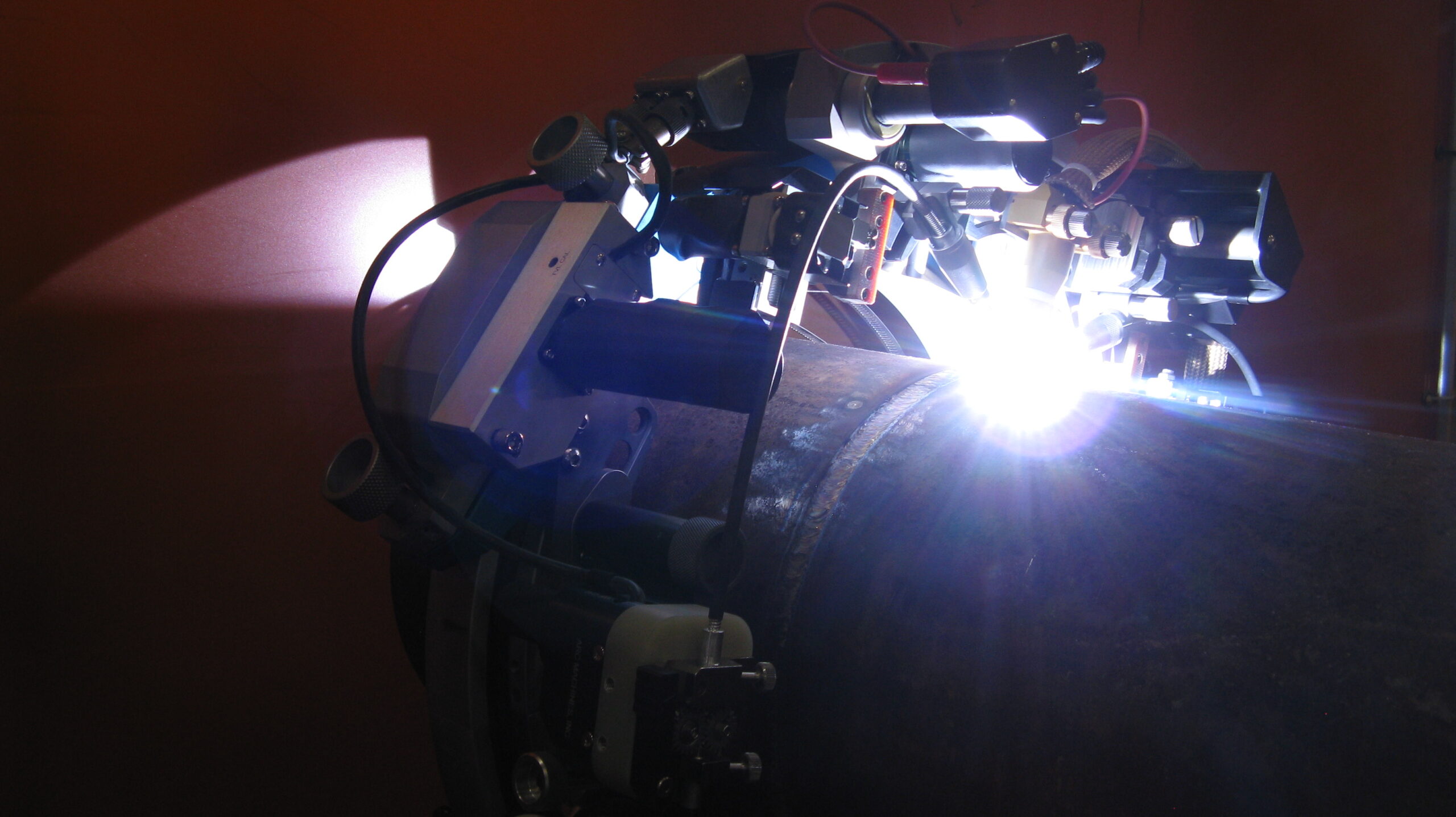
Electrical currents are a fundamental part of arc welding, and polarity is an inescapable part of electricity. Polarity is simply the aspect of having two diametrically opposed poles, and in electrical terms, polarity is the direction of current flow in the circuit between these opposed poles. In direct current (DC), the flow of current is from one pole to the other. In alternating current (AC), the direction of flow isn’t fixed, and electricity alternates its flow in the direction of each pole in equal measure. It should come as no surprise, given how core electricity is to arc welding, that understanding polarity and both DC and AC flows are essential to creating acceptable welds, and GTAW polarity is especially important for orbital welding.
Direct Current Electrode Positive and Electrode Negative
In direct current welding, electrical current can flow towards either pole of the circuit. The most common setup for this across types of welding is direct current electrode negative (DCEN), with the metal workpiece serving as the positive pole. This is also commonly called straight polarity, and this current flow is standard beyond welding. Essentially, the negative electrode pole is the ground, and striking an arc completes the circuit. This is the same current flow that is standard in vehicles, with even sophisticated electric vehicles being DC and negative ground. However, there is also reverse polarity or direct current electrode positive DCEP, where the base metal to be welded serves as the negative or ground. How these two different current flows change the circuit is described in detail in the table below.
Direct Current Electrode Negative vs. Direct Current Electrode Positive
| Direct Current Electrode Negative (DCEN) Straight Polarity |
Direct Current Electrode Positive (DCEP) Reverse Polarity |
|---|---|
| The majority of heat (~2/3) is generated at the work joint. | The majority of heat (~2/3) is generated at the electrode tip. |
| Electrons are liberated from the electrode tip and flow across the arc to the workpiece. | Electrodes are liberated from the workpiece and flow to the electrode tip. |
| Metal deposition with consumable electrodes is reduced due to lowered heat. | Metal depositions are high with consumable electrodes due to heat generation. |
| Fusion potential is high due to the majority of the heat being at the joint. | Fusion of the welded joint may be incomplete due to lowered heat. |
| Since the arc flows from the tip to the workpiece, oxides are not removed from the workpiece. The workpiece requires cleaning to remove impurities. | The flow of electrons from the workpiece helps to break apart surface oxides and clean other impurities from the surface—reducing the potential for inclusions in the weld. |
When it comes to welding with AC, since the current alternates between the two directions, the elements of both DCEN and DCEP apply. This has some advantages. Welding with AC helps break apart oxides and clean work surfaces, distributing heat more evenly between the electrode and workpiece sides of the arc. Together, these elements offer greater control over heat and metal deposition during welding. However, welding with AC isn’t wholly a good thing for every type of welding application.
Wire-fed gas metal arc welding (GMAW) and flux core arc welding (FCAW) are partly dependent on the heat being focused on the consumable electrode wire to melt it swiftly and enable high levels of metal deposition. In welding metals with very high heat resistance, like stainless steel and nickel alloys, evenly splitting the heat between the workpiece and the electrode tip makes it more difficult and slower to fuse the deposited material and the workpiece as the heat on the workpiece side is reduced. This sort of reduced effectiveness is why GTAW machines are mostly DC, and most GTAW polarity is electrode negative.
Why GTAW Polarity Is Mostly DCEN
Gas tungsten arc welding (GTAW) is mostly DCEN. There are a couple of reasons for this. First, GTAW is an inherently low-deposition welding process. In fact, its greatest advantage is that it makes very clean, very small, and very precise welds specifically because of that slow and highly controlled deposition. The workpiece-focused heat of DCEN welding helps with weld penetration and fusion. DCEP, in contrast, is rarely, if ever, used with GTAW due to the level of heat focused on the nonconsumable electrode, vastly increasing the possibility of it becoming contaminated and, at the very least, dramatically shortening the lifespan of a rather expensive tungsten electrode.
The disadvantage of DCEN GTAW polarity is that it lacks some of the oxidation-breaking properties of DCEP. Metals like aluminum, where oxides form instantaneously on an exposed surface, are more difficult to make clean welds on due to the relative difficulty of removing these oxides. It isn’t impossible to weld aluminum with DCEN GTAW polarity, and it is indeed quite common—it just requires a greater level of skill. GTAW using AC is generally preferred for aluminum and similar metals because AC polarity helps break apart surface oxides without placing too extreme levels of heat on the electrode. The combination of factors improves welding productivity for aluminum compared to DCEN GTAW. However, on more heat-resistant metals, like when TIG welding stainless steel pipe, the productivity of GTAW using alternating current may be negatively impacted as only half of the current cycle is putting heat on the workpiece and may negatively impact penetration and fusion, making weld completion a much lengthier prospect.
Arc Machines, Inc. is proud of our direct current electrode negative weld heads and power supplies with a 100 percent duty cycle that speeds the production of high-heat stainless steel and nickel alloy tube and pipe systems. For product inquiries, contact sales@arcmachines.com, and for service, contact service@arcmachines.com. For more information on GTAW polarity and to develop a custom solution, contact us to arrange a meeting.





